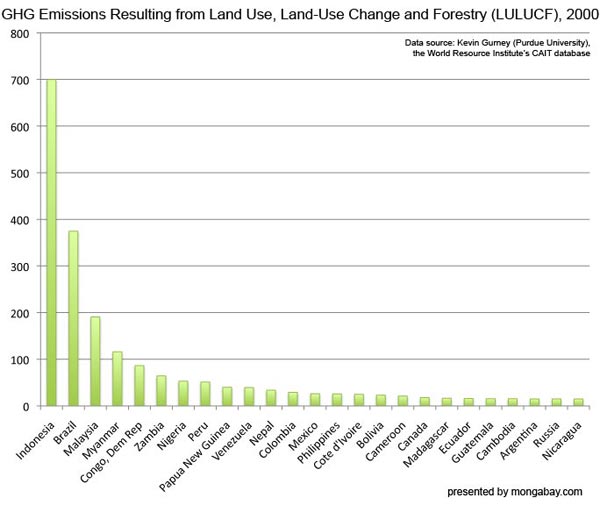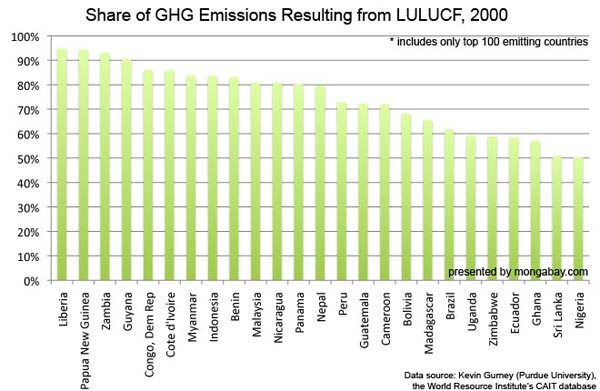Deforestation and peatlands degradation is Indonesia’s largest source of greenhouse gas emissions, accounting for more than 80 percent of the country’s CO2 emissions.
Indonesia lost some 21.7 million hectares of forest cover between 1990 and 2005, an extent second only to Brazil, which lost 42.3 million hectares, according to the U.N. About 77 percent of this loss was primary forest, the most biologically diverse and carbon-dense form of forest.
Logging, establishment of pulp and paper plantations, oil palm estates, and agricultural expansion were the dominant drivers of deforestation in Indonesia during that period.
But Indonesia now has an opportunity to make money from reducing its deforestation rate under a proposed mechanism that would pay countries for protecting their forests. Were Indonesia to halt deforestation (an unlikely scenario), it would avoid, at minimum, emissions of 680 million metric tons of carbon dioxide per year.

Sumatra 2009

Kalimantan 2009

Sumatra 2009
Kalimantan 2006

Sumatra 2009
Kalimantan 2006
Kalimantan 2006
Kalimantan 2006
Kalimantan 2006
Kalimantan 2006
Kalimantan 2006

Greenhouse gas emissions resulting from Land Use, Land-Use Change and Forestry (LULUCF). LULUCF includes deforestation and forest degradation. The REDD mechanism seeks to reduce these emissions by compensating tropical countries for conserving their forests.

Share of GHG emissions resulting from LULUCF in the year 2000. This chart includes on the 100 top emitting countries.
More pictures of deforestation in Indonesia | More on deforestation in Indonesia | Indonesia environmental news















